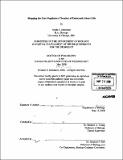Mapping the core regulatory circuitry of embryonic stem cells
Author(s)
Johnstone, Sarah E
DownloadFull printable version (54.76Mb)
Other Contributors
Massachusetts Institute of Technology. Dept. of Biology.
Advisor
Richard A. Young.
Terms of use
Metadata
Show full item recordAbstract
Embryonic stem (ES) cells are of tremendous biological interest because they have the capacity, termed pluripotency, to generate any cell type of the adult organism. Our lab is interested in understanding the genetic circuitry that governs pluripotency. For my thesis work I have contributed to a team effort to deduce the transcriptional regulatory circuitry of ES cells. This collaborative effort first sought to define the genes that are regulated by the key pluripotency regulators, Oct4, Sox2 and Nanog. We then determined the genes targeted by the Polycomb Repressive Complex in ES cells. These datasets allowed us to define the core transcriptional regulatory circuitry for these cells and demonstrated that pluripotency is mediated through the repression of developmental regulators. Finally, an effort to understand how Wnt signaling modifies this circuitry led to the discovery that the Wnt signaling component Tcf3 is a core component of the transcriptional regulatory circuitry and serves to repress the pluripotency regulators, contributing to the balance between pluripotency and differentiation.
Description
Thesis (Ph. D.)--Massachusetts Institute of Technology, Dept. of Biology, 2008. Includes bibliographical references.
Date issued
2008Department
Massachusetts Institute of Technology. Department of BiologyPublisher
Massachusetts Institute of Technology
Keywords
Biology.